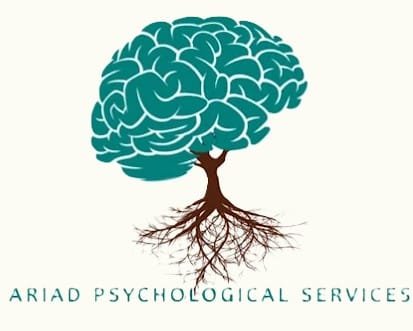Autism Spectrum Disorder (ASD) is one of the most widely misunderstood neurodevelopmental conditions. Often, people hold rigid ideas about what autism “looks like,” leading to harmful misconceptions that can delay diagnosis, limit support, and contribute to stigma. From the belief that all autistic individuals are nonverbal to the idea that autism is only a childhood disorder, these myths obscure the reality of how autism presents across the lifespan.
As someone with extensive experience working with autistic individuals—as an ABA therapist and supervisor, a school psychologist, and a clinician trained in autism assessment—I have witnessed firsthand the diversity in how autism presents. My years in schools and clinical settings have shown me that autism does not fit into a single mold. Each individual has unique strengths and challenges, and many do not exhibit the stereotypical traits often portrayed in media or assumed by the general public.
Autism in Children: Beyond the Stereotypes
Many people assume that autistic children all exhibit the same behaviors: avoiding eye contact, engaging in repetitive movements like hand-flapping, and having severe communication challenges. While these traits can certainly be present, autism is a spectrum, meaning that its characteristics vary widely from person to person.
Common Misconceptions About Autism in Children:
- “All autistic children avoid eye contact.” While some do, others maintain eye contact but may find it uncomfortable or overwhelming.
- “Autistic kids don’t want friends.” Many autistic children deeply desire friendships but may struggle with the social nuances of interaction.
- “They all have intellectual disabilities.” While some autistic individuals have intellectual disabilities, many have average or above-average intelligence, and some even have specialized areas of deep interest and expertise.
- “Only boys are autistic.” Though autism is diagnosed more often in boys, research suggests that autistic girls are underdiagnosed due to differences in how they express traits, often masking their symptoms to fit in socially.
In my work in schools, I have assessed many students whose autism was overlooked because they were academically successful or socially camouflaged their struggles. These children often received delayed diagnoses, meaning they missed out on crucial support that could have helped them navigate their environments more effectively.
Autism in Adults: The Overlooked Population
One of the most persistent myths is that autism is a childhood disorder. In reality, autistic children grow up to be autistic adults. However, because diagnostic criteria were originally based on young boys, many autistic adults—especially women and those with less outwardly visible traits—go undiagnosed for years or even decades.
How Autism Often Presents in Adults:
- Social Fatigue: Many autistic adults experience exhaustion from masking (suppressing or hiding autistic traits to fit in socially).
- Sensory Sensitivities: Difficulty with loud noises, bright lights, certain textures, or strong smells can persist into adulthood.
- Special Interests: Many autistic adults have deep passions in specific subjects, which can translate into highly specialized careers.
- Difficulty with Transitions: Unexpected changes in routine can be highly distressing.
- Mental Health Challenges: Undiagnosed or unsupported autism can lead to anxiety, depression, or burnout.
Through my training in autism assessment, I have worked with adults who only discovered they were autistic later in life, after years of feeling different but not understanding why. Many of them had struggled with mental health issues that were actually rooted in undiagnosed autism. This highlights the importance of broadening our understanding of how autism presents beyond childhood.
The TikTok Trend: “They Don’t Look Autistic”
Recently, social media platforms like TikTok have played a significant role in raising awareness about autism, particularly among adults who were previously undiagnosed. The trend where autistic individuals share the phrase “He/She/They don’t look autistic” highlights a common and frustrating misconception. Many autistic people, particularly those who do not fit traditional stereotypes, often hear this dismissive statement when they disclose their diagnosis.
This trend sheds light on the reality that autism is not about how someone appears but rather how they experience the world. Social media has empowered autistic individuals to challenge outdated perceptions and advocate for broader recognition of autism’s diverse presentations.
As a professional in this field, I appreciate how this movement has opened up discussions that were long overdue. However, it also underscores the need for more education to help people understand that autism does not have a singular “look.” It is crucial that we listen to autistic voices, validate their experiences, and move beyond surface-level assumptions.
Why These Misconceptions Matter
Misunderstanding autism has real consequences. Autistic children who do not fit the stereotypical mold may go undiagnosed, missing out on early intervention and support. Autistic adults who have spent years masking their traits may struggle with mental health issues due to a lack of understanding and self-acceptance.
Breaking down these misconceptions is crucial. Autism does not have a single “look”—it is a diverse and individualized experience. By broadening our understanding of how autism presents across different ages and genders, we can foster greater inclusion, better support, and a more accurate representation of autistic individuals in society.
Moving Forward: Embracing Neurodiversity
Rather than viewing autism as a collection of deficits, we should embrace neurodiversity—the idea that different ways of thinking and experiencing the world are not wrong but simply different. Education, advocacy, and listening to autistic voices can help us create a more inclusive world where autistic people of all ages receive the understanding and accommodations they deserve.
Final Thought: If you’ve ever found yourself thinking, “They don’t look autistic,” take a moment to reflect on what that means. Autism is not about appearance; it’s about experience. And every autistic individual—whether a child, adult, verbal, nonverbal, socially outgoing, or reserved—deserves to be understood and respected for who they are.

